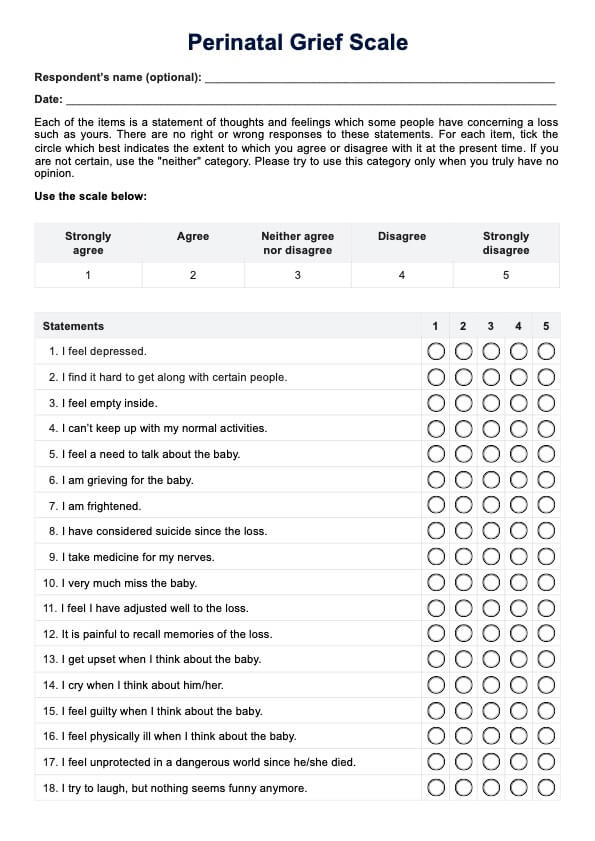The three C’s of grief are Coping, Change, and Connection. These represent how individuals manage grief, adapt to life changes, and maintain emotional connections after a loss.

Perinatal Grief Scale
Learn about the Perinatal Grief Scale used in assessing grief after perinatal loss. Understand its use, scoring, and how to support grieving parents.
Perinatal Grief Scale Template
Commonly asked questions
Perinatal loss includes miscarriage, stillbirth, ectopic pregnancy, neonatal death, and infant death. Each type refers to the death of a baby during pregnancy or shortly after birth.
Grieving the loss of an unborn baby involves seeking emotional support from loved ones, counseling, joining support groups, and allowing oneself time and space to process the loss. This complicated grief is especially important to address, especially as it affects a mother's overall physical health, the parents' marital relationship, and any subsequent pregnancies.
EHR and practice management software
Get started for free
*No credit card required
Free
$0/usd
Unlimited clients
Telehealth
1GB of storage
Client portal text
Automated billing and online payments











